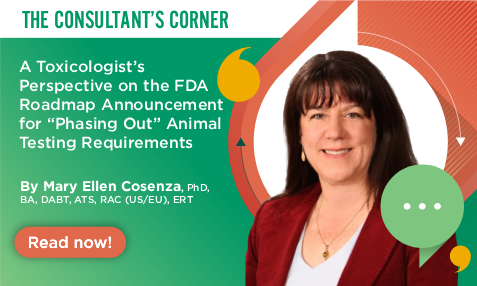Case Study: Two Examples of Successful Automation Integration at Altasciences for Pharmacokinetic Studies
By Martin Rougée, Optimization Scientist, Bioanalytical Operations
Automation offers several advantages to any industry. For a contract research organization (CRO), it can play an integral role in increasing the quality and speed of drug development while reducing costs, repetitive manual tasks, and human error. For biotechnology and pharmaceutical companies, automation can decrease their drug-to-market development time and remain financially competitive in an evolving market.
My experience as an optimization scientist has shown how automation can be a valuable tool to support drug development for sponsors of all sizes. As an example, at Altasciences, we have developed an automated workflow for labeling tubes, and preparing standard curves and quality control samples used in pharmacokinetic studies.
Manually labeling tubes for sample collection is a repetitive task, and automating the process saves significant time while preparing assay tubes used internally, or when preparing clinical sample collection kits. Using a liquid handler to prepare samples for a calibration curve improves the quality of those preparations by reducing manual pipetting bias, variability and increasing reproducibility. In this case study, we will share two ways we introduced automation to significantly enhance our ability to meet and exceed client expectations.
Optimizing Tube Labeling for Improved Efficiency
The tube labeling process starts with the generation of an Excel file generated from our Laboratory Information Management System (LIMS), which contains a list of unique IDs and sample information. This file is then imported into an MS App interface to create the user request. The label is printed and applied to the tube using a Scinomix Sci-Print VXL. Key performance indicators (KPIs) are automatically generated to capture the use and demands of different teams and determine the time saved using this automated process.
This workflow has proven to be a remarkable success, with more than 100,000 tubes labeled and 650 hours of manual labeling saved in a period of 20 months. It has been widely adopted by multiple teams at Altasciences, demonstrating strong engagement and consistent use across the organization.
Before the implementation of the MS App requesting interface, our scientists would send multiple emails to the labeling team with their parameters and list of IDs which increased the risk of misunderstanding and communication errors. With the new requesting tool, we have decreased the number of emails, improved communication efficiency between key stakeholders, and enhanced request traceability.
Key features were implemented to maintain flexibility within the automated process, including the ability for users to label various tubes, customize labels, and receive email notifications upon labeling completion.
Precision Through Enhanced Quality Control Sample Preparations
Most drug development projects span several years and, during this time, challenges such as employee turnover and manual pipetting errors can lead to inconsistencies in serial dilutions. This can result in failed runs and wasted reagents. Using a liquid-handling system (LHS) to prepare standard curve and quality control (STD&QC) demonstrated great precision and reproducibility, which are critical for accurate measurement of drugs during an extended period.
In collaboration with the ligand binding assay (LBA) team, we developed a semi-automated flexible workflow by using the LHS and an Excel file as a worklist such that our scientists can select and customize the name, concentration range, number and volume of STD&QC. They can also select the number and volume of aliquots needed.
This is particularly useful for sponsors with large projects that require the analysis of numerous samples or extended studies spanning multiple months or years.

To date, this workflow has been tested to generate standards and QCs on six different assays, with at least two curves and QCs for each. Our workflow reached 100% run success and 100% bridging between curves made for a specific project using various matrices such as serum, plasma, and urine.
Conclusion: The Future of Automation at Altasciences
Though these two automated systems serve different purposes, they were both designed with the same goal in mind: to consistently meet and exceed sponsor expectations using highly flexible workflows and increase throughput and reproducibility. Motivated by our success, we are actively working to enhance the automation and optimization of sample dilution and reagent addition for ELISA and ECLIA assays to support large pharmacokinetic clinical trials.
Automated workflows ensure higher quality, better efficiency, and consistency across projects of all sizes. By optimizing key routine processes, we can continue to deliver exceptional results and maintain flexibility to help our sponsors develop their innovative therapeutics and reach the market rapidly for the benefits of patients.
Do you need a pharmacokinetic study? Reach out to Altasciences’ experts today to learn how we can help.
About the Author

Martin Rougée joined Altasciences in early 2024 as an Optimization Scientist. He began his career in academia, focusing on plant epigenetics and molecular biology in Paris, France. After completing his doctorate, he moved into the industry by joining a startup that specialized in enzymatic DNA synthesis, where he enhanced their processes and reagents using automated liquid handling technology.
In 2023, he relocated to Montreal, with the aim to continue automating tasks with the same liquid handling system, which ultimately led him to join Altasciences. Martin collaborates with various departments within the company, implementing automated solutions to improve efficiency.



